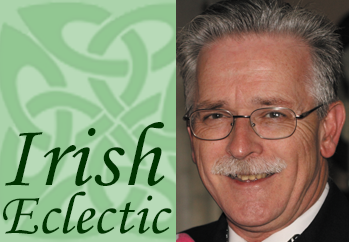St. Patrick’s Cathedral: The Church the Pennies of the Poor Built
Opinion Advocates for ideas and draws conclusions based on the author/producer’s interpretation of facts and data.
 By Brian McGowan
By Brian McGowan
Growing up in an Irish Catholic American family, there were several “pilgrimage” sites my parents took us to each year. One was an East 90s boarding house where my grandfather, Frank McGowan, first lived when he came to America in 1890. Another was Castle Clinton, where he first set foot on what he proudly called his “adopted country.”
Frank met and married the daughter of a fellow Leitrim man, Pat McGloin, who had stepped through that same portal in 1864 – my first ancestor in the U.S. A ferry ride to Staten Island might follow, to visit my father’s sister, Aunt Margaret, a Sister of Mercy who cared for orphans.
There was always the periodic visit to Calvary Cemetery in Queens, where many of the family rested peacefully, their toils done.
But the biggest treat was the biggest church we knew – St. Patrick’s Cathedral, on Manhattan’s Fifth Avenue. My father would tell us the tale of its construction during a time when to be Irish and Catholic in America was a barrier every bit as daunting as that faced by so many today.
“The pennies of the laboring poor built that church,” Pop would tell us. “Maids and day laborers, folks with little to their name.”
Their hearts saw a future where the spires of their cathedral would soar to the greatest heights, and they would be treated as equals to the native-born. Let us take a trip back in time, to see how this dream evolved.
It’s 1808. New York’s Catholics number about 10,000, largely Irish. Their sole church is St. Peter’s, on Barclay Street, built in 1785.
A new church rises on Mulberry Street, named in honor of Saint Patrick. Dedicated in 1815, it is today called the “Old Cathedral.” Meanwhile, the Irish Catholic population of New York City rapidly increases, and in 1829, the Diocese of New York buys land far north of the city proper, where bedrock outcroppings dot the landscape far more than houses. The planned use of the uptown property as a cemetery is soon abandoned, and a perfect use is found: a massive cathedral worthy of the saint’s name.
Led by architect James Renwick, work begins on Aug. 15, 1858, the Feast of the Assumption. Archbishop John Hughes lays the cornerstone. A crowd of 100,000 watches.
Money, of course, is an issue. Over $100,000 has been raised through the largesse of affluent Catholics; it’s enough to start excavation and lay the foundation, but not much more. Soon funds are gone, and in 1860, the work stops. It will not begin again until 1866, under Hughes’s successor, Archbishop John McCloskey.
From this point on, the bulk of the cathedral’s funding comes from the pockets of poor Irish immigrants, the “maids and day laborers” of my father’s recollection, his own grandparents among them. Religious and ethnic bigots scoff, while progressive newspapers such as Hungarian immigrant Joseph Pulitzer’s New York World recognize that the enabling factor is “not the superfluity of wealth, but…the offerings of poverty.”
On May 25, 1879, the cathedral opens, though no spires yet grace the skyline. These will be added over the next decade, as contributions continue to flow in as the Irish make their inroads into all walks of American life. And in October 1888, with both spires in place, the cathedral is finally considered completed. Archbishop Michael Corrigan has succeeded McCloskey. For almost a year, the spires’ 329.5-foot height will make the cathedral New York’s tallest structure, until eclipsed in 1890 by Pulitzer’s New York World Building on Park Row, a scant 20 feet taller.
The cathedral, of course, is still standing, and should be for a thousand years or more. The “World” building is demolished in the 1950s to make way for an access ramp to the Brooklyn Bridge.
Although the cathedral’s spires are today dwarfed by Midtown Manhattan’s high-rises, there are few greater places to visit in New York than the church built with the pennies of the poor.
Longtime Pleasantville resident Brian McGowan was born and raised in the Bronx, and is a second-, third- and fifth-generation Irish-American/Canadian, as his immigrant ancestors followed several paths to the New World. Reach him at brian.m.mcgowan1952@gmail.com. He is the author of three books: “Thunder at Noon,” about the Battle of Waterloo; “Love, Son John,” about World War II; and “Island Prize,” about the Revolutionary War in 1776 New York. All are available at Amazon.com.

Examiner Media – Keeping you informed with professionally-reported local news, features, and sports coverage.
